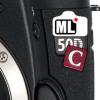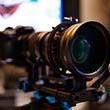Leaderboard
Popular Content
Showing content with the highest reputation on 01/16/2013 in all areas
-

Prototype Metabones Speed Booster equipped NEX 7 *VS* full frame (5D Mark III)
P4INKiller and one other reacted to jcs for a topic
It's not just about full frame support (though I admit that's what got my attention as a 5D2/5D3 owner with Canon lenses). They named it "Speed Booster" and not "Full Framester": the light gathering and focusing nature of the device is very cool. My 50 F1.4 becomes an F1.0, the 24-105 F4L becomes an F2.8, 70-200 F2.8 II becomes an F2.0 etc. The last feature which most people find hard to believe is the increase in image quality (improved MTF- modulation transfer function). This is measurable (they show graphs), and example images with reduced CA, increased sharpness and contrast: http://www.metabones.com/images/metabones/Speed%20Booster%20White%20Paper.pdf Lots more example photos and videos from real-world use here: http://philipbloom.net/2013/01/13/speedbooster/ A minor technicality- the device is actually a 1.09 crop (close enough :)).2 points -
Metabones Speed Booster affect on second hand lens market etc.
GoatheSeajets reacted to Matt for a topic
Just curious about people's views on this. What will the trends be? Do you think sneaky people will now go around cherry picking fast second hand lenses on eBay to resell for lots more money when using a Speed Booster becomes a norm? Or will there not be much affect just cheaper old lenses like f2 and f2.8 becoming more popular? Maybe selling for a little bit more. Will new Canon lenses start selling very well to the MFT market and we all get on like happy bunnies?! Will people say "I love my GH3 with my Canon glass they were made for each other!!!" "My Canon glass is so much better than when it was on my Canon!" And what will the affect be on the beloved Voigtlander 25mm and the 17.5mm? Will they get the cold shoulder? Will the prices tumble. Will SLRMagic be checking out all the books on advanced optics from the local library. Only kidding ;) Predictions please.1 point -

Prototype Metabones Speed Booster equipped NEX 7 *VS* full frame (5D Mark III)
richg101 reacted to Andrew Reid for a topic
Micro Four Thirds becoming Super 35mm is nothing to be sniffed at! How many of us were calling for a Blackmagic Cinema Camera 2 with Super 35mm sized chip?1 point -
Prototype Metabones Speed Booster equipped NEX 7 *VS* full frame (5D Mark III)
Sean Cunningham reacted to Xiong for a topic
I some times wonder the same, but i like to think its just curiosity and nothing negative... at least I hope..1 point -
Not possible. Without being recorded through a speed booster, all editing software will crash during export from here on in.1 point
-

Prototype Metabones Speed Booster equipped NEX 7 *VS* full frame (5D Mark III)
Cfreak reacted to Sean Cunningham for a topic
What it means is the death of sacrificing video performance just to get the look of full frame. None of the full frame options currently available, or announced, offer anywhere near the best motion picture performance. $1000 USD camera (why, when you could buy a GH2, but whatever) + $700 adapter cost = video performance that totally curb-stomps a $1700 full frame camera, or a $2975 full frame camera, or a $6728.99 full frame camera, or a $12,728.99 full frame camera. That's what this means.1 point -
Don't forget the fact that every lens you buy suddenly has a double purpose (with and without speedbooster). And you don't have to buy f/1.4 lenses anymore, you can pay less than half for a f/2 and have the same light gathering capabilities. Even a dirt cheap f/2.8 prime makes a nice f/2.0. For example: I'm interested in buying a reasonably fast (at least f/2) standard lens (50mm equivalent) and a wide angle (35mm equivalent) for my GH2. I could buy a Canon FD / Nikkor 24mm f/2 to get the 50mm equivalent, that would cost €300 to €400 on eBay. To get a 35mm equivalent, I'd need a 17mm. I could buy some crappy, rare, huge 17mm f/3.5, but that's not fast. The only choice is a Voigtlander 17.5mm f/0.95, for €1200! With the Speed Booster, I could buy a Nikkor 35mm f/2.8 for €100 to get 50mm f/2 and a Nikkor 24mm f/2.8 for €200 to get a 35mm f/2. For the price of the Voigtlander 17.5mm, you could buy the Samyang 24mm f/1.4 and the Speed Booster, and get pretty much the same effect: 35mm f/1.0. Plus the added bonus of all your lenses suddenly behaving the same as their much more expensive counterparts. It is not cheap. But if you are in the market for a a few fast standard/wide lenses like me, then the Speed Booster instantly pays itself back. Plus you get options that aren't even possible without the adapter. To me this actually is the most exciting product I've seen in years. Yes, we have seen a lot of technical developments on the camera side. Better sensors, cheaper camera's... Nice, but glass always stays the same. Nothing changes physics. Good glass is expensive. In a way it's nice that this doesn't change, lenses retain their value. But now Metabones manages to come up with something that turns this very fixed part of photography/filmmaking upside down. If I were Sony (CaNikon are too slow anyway..) I'd instantly buy out Metabones and release this technology inside a mirrorless camera (with A-mount, just fit the element in place of the SLT-construction and use Phase Detection pixels) That would be the break trough cheap 'fullframe' camera and stir the market :)1 point
-
I'm going to use the FS700 + MB SB to create sharper, full frame cat videos for youtube. That and test charts. Maybe combine the two concepts and shoot a Hello Kitty test chart.1 point
-
Wow that is some really great footage! Must have been quite a trip! I guess the question is how much post-processing work you can handle. At the standard 0,0,0,0 settings, you will get moire and aliasing. You also get banding in the skies. However, if you have Adobe Premiere CS5.5 or CS6 you can do some simple corrections. The most common is Fast Color Corrector and Sharpen. Fast Color Corrector can add contrast, saturation, and you can set levels. The best thing is it can playback in realtime. When you lower the contrast and saturation in camera, you get a "flat" desaturated image that you can work with in post. But I suggest not lowering it too much otherwise there might not be enough information to bring back in post. I've seen people go from -2 to -4. I've been using -5 contrast and -3 saturation, and then I can play with gamma +.3 to +.5, and saturation 130% to 150%. I suggest you test it out and see how much you can work with. Moire and aliasing are based on the in-camera sharpening. I have dialed sharpening to -5 and it helps a lot. In fact I rarely if ever see anymore moire or aliasing. You can add sharpening in post with the Sharpen filter. I suggest adding anywhere from 10-30. But again, when you add sharpening even in post you risk adding aliasing, especially to sharp edges like lamp posts, roof lines, power lines, etc. But at least in post you can render it and see how much you want to add. If you do it in-camera, it's burned in and can't be removed. Again depends on how much you want to do in post, but at least you get the flexibility to decide what you like. Banding is unavoidable with an 8bit codec. One thing you can do is to use the 1080P60P (or 50P in PAL) 50mbit codec. This codec is better in a lot of ways than the 72mbit All-I codec. 1) digital noise characteristics is better 2) you can still do work in post 3) more recording time 4) great for slow-motion. The only thing you can't do with the 50mbit codec is use EX Tele mode, that only works with 72mbit. But for everything else the 50mbit codec is best (even in 30P or 24P). As far as Noise Reduction goes, by dialing it down you get more noise in the image, but you also get more detail. This also helps reduce banding. I use Neat Video to reduce noise (very reasonable price at around $100). It does a really good job of reducing noise and bringing in detail. The penalty is that it requires HUGE processing time. An hour of footage is easily 40 hours of rendering time (at least for my Mac Tower). This is a significant consideration. However it also enables you to shoot ISO 1600-5000, which can help in very low light interiors or night shots. Another way to reduce banding is to use some kind of Film Grain plug-in. I'm just starting to use this for sky or sunset shots. You can look at my tests here: https://vimeo.com/57102903 I think your footage is great, and I really like the results from your 12-35mm lens! The OIS is awesome! I know you have some jitters and movement, again this can be removed in post but at some cost (processor and $$). Most common is Adobe After Effects and using the Warp Stabilizer. But I have another suggestion. I use a Joby Gorillapod. This can be used as a mini-tripod as well as for stability. And since you cycle and need things small and lightweight, I think it's perfect for you. You can clamp it on your bike, chairs, poles, and you can also form it around your arm for stability. http://www.bhphotovideo.com/c/product/680973-REG/Joby_GP8_BHEN_Gorillapod_Focus_Ballhead_X_Bundle.html Sorry this is a lot to cover, I hope it helps!1 point
-
Need to use lexar 1000x card for 4K. If not using the correct card then issues. If it was an over heating issue then it was a defective camema.1 point



